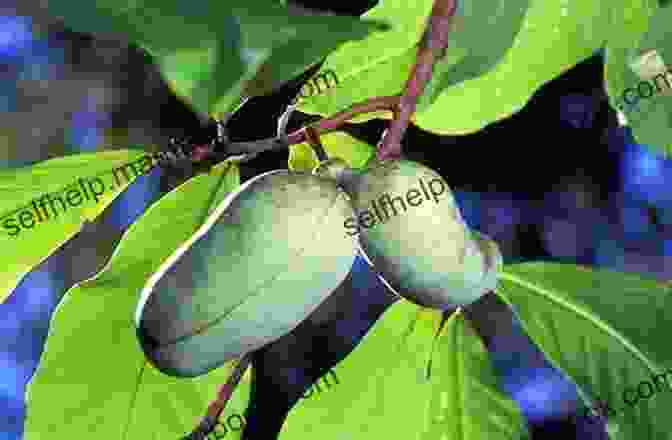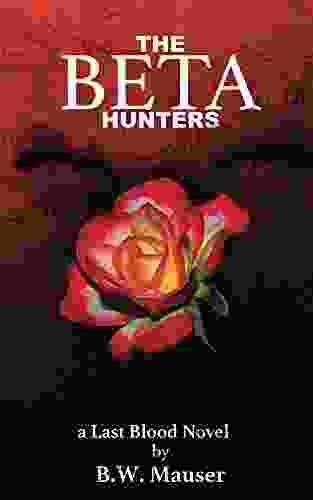For the Love of Pawpaws

An Ode to the Indiana State Fruit

Pawpaws are a unique and delicious fruit that are often overlooked. Native to the eastern United States, pawpaws have a custard-like flesh that is sweet and flavorful. The fruit is also high in vitamins and minerals, making it a nutritious addition to any diet.
4.8 out of 5
| Language | : | English |
| File size | : | 22847 KB |
| Text-to-Speech | : | Enabled |
| Screen Reader | : | Supported |
| Enhanced typesetting | : | Enabled |
| X-Ray | : | Enabled |
| Print length | : | 271 pages |
| Lending | : | Enabled |
Despite their many attributes, pawpaws are not as well-known as other fruits, such as apples or oranges. This is partly due to the fact that pawpaws are not widely cultivated. The trees are slow-growing and do not produce fruit for several years. Additionally, pawpaws are not self-fertile, so they require at least two trees to produce fruit.
Despite these challenges, there is a growing interest in pawpaws. Chefs are beginning to discover the unique flavor of pawpaws, and farmers are planting more trees to meet the demand. As a result, pawpaws are becoming more widely available in markets and restaurants.
History of Pawpaws
Pawpaws have a long history in North America. The fruit was first eaten by Native Americans, who used it for food and medicine. Pawpaws were also an important food source for early European settlers. In the 19th century, pawpaws were widely cultivated in the eastern United States. However, the popularity of pawpaws declined in the 20th century, as other fruits became more popular.
In recent years, there has been a renewed interest in pawpaws. This is due in part to the growing awareness of the fruit's nutritional value and unique flavor. Additionally, chefs are beginning to discover the versatility of pawpaws in the kitchen.
Cultivation of Pawpaws
Pawpaws are relatively easy to grow, but they do require some specific conditions. The trees prefer moist, well-drained soil with a pH of 5.5 to 6.5. Pawpaws also need full sun to partial shade. The trees are hardy to USDA Zone 5, which means they can be grown in most parts of the United States.
Pawpaws are not self-fertile, so they require at least two trees to produce fruit. The trees can be planted 10 to 15 feet apart. Pawpaws typically begin to bear fruit in 3 to 4 years.
Culinary Uses of Pawpaws
Pawpaws are a versatile fruit that can be used in a variety of dishes. The fruit can be eaten fresh, cooked, or processed. Here are a few ideas for how to use pawpaws:
- Eat pawpaws fresh as a snack or dessert.
- Cook pawpaws in pies, cobblers, and other desserts.
- Make pawpaw ice cream or sorbet.
- Use pawpaws in smoothies and shakes.
- Make pawpaw jam or jelly.
Tips for Growing and Enjoying Pawpaws
Here are a few tips for growing and enjoying pawpaws:
- Choose a planting site that receives full sun to partial shade and has well-drained soil.
- Plant two or more pawpaw trees to ensure pollination.
- Water the trees regularly, especially during dry spells.
- Fertilize the trees annually with a balanced fertilizer.
- Harvest pawpaws when they are ripe. The fruit will be soft to the touch and have a slightly yellow color.
Pawpaws are a unique and delicious fruit that can be enjoyed in a variety of ways. By following these tips, you can grow and enjoy your own pawpaws for years to come.
4.8 out of 5
| Language | : | English |
| File size | : | 22847 KB |
| Text-to-Speech | : | Enabled |
| Screen Reader | : | Supported |
| Enhanced typesetting | : | Enabled |
| X-Ray | : | Enabled |
| Print length | : | 271 pages |
| Lending | : | Enabled |
Do you want to contribute by writing guest posts on this blog?
Please contact us and send us a resume of previous articles that you have written.
 Top Book
Top Book Novel
Novel Fiction
Fiction Nonfiction
Nonfiction Literature
Literature Paperback
Paperback Hardcover
Hardcover E-book
E-book Audiobook
Audiobook Bestseller
Bestseller Classic
Classic Mystery
Mystery Thriller
Thriller Romance
Romance Fantasy
Fantasy Science Fiction
Science Fiction Biography
Biography Memoir
Memoir Autobiography
Autobiography Poetry
Poetry Drama
Drama Historical Fiction
Historical Fiction Self-help
Self-help Young Adult
Young Adult Childrens Books
Childrens Books Graphic Novel
Graphic Novel Anthology
Anthology Series
Series Encyclopedia
Encyclopedia Reference
Reference Guidebook
Guidebook Textbook
Textbook Workbook
Workbook Journal
Journal Diary
Diary Manuscript
Manuscript Folio
Folio Pulp Fiction
Pulp Fiction Short Stories
Short Stories Fairy Tales
Fairy Tales Fables
Fables Mythology
Mythology Philosophy
Philosophy Religion
Religion Spirituality
Spirituality Essays
Essays Critique
Critique Commentary
Commentary Glossary
Glossary Bibliography
Bibliography Index
Index Table of Contents
Table of Contents Preface
Preface Introduction
Introduction Foreword
Foreword Afterword
Afterword Appendices
Appendices Annotations
Annotations Footnotes
Footnotes Epilogue
Epilogue Prologue
Prologue Robert J Manley
Robert J Manley Hemang Doshi
Hemang Doshi Scott Tipton
Scott Tipton Clinton Mcrae Jr
Clinton Mcrae Jr Amanda Rigby
Amanda Rigby Shawn D Guiont
Shawn D Guiont Anthony M Destefano
Anthony M Destefano Quovella Black
Quovella Black Youngsang Cho
Youngsang Cho Ray Bears
Ray Bears I R Wright
I R Wright Tasha Squires
Tasha Squires Kindle Edition
Kindle Edition Amy Gaines
Amy Gaines Caroline Linden
Caroline Linden Reta Halteman Finger
Reta Halteman Finger Nicholas Guild
Nicholas Guild Rebecca Stobaugh
Rebecca Stobaugh S T Cartledge
S T Cartledge Chantal Bilodeau
Chantal Bilodeau
Light bulbAdvertise smarter! Our strategic ad space ensures maximum exposure. Reserve your spot today!

 Benjamin StoneSpring Summer Winter Fall: Exploring the Lyrical Seasons of Mary Oliver |...
Benjamin StoneSpring Summer Winter Fall: Exploring the Lyrical Seasons of Mary Oliver |...
 Brent FosterThe Enigmatic Ouija Kings: Inside the Thrilling World of the Wolves MC King...
Brent FosterThe Enigmatic Ouija Kings: Inside the Thrilling World of the Wolves MC King... Spencer PowellFollow ·13.2k
Spencer PowellFollow ·13.2k Victor HugoFollow ·10.1k
Victor HugoFollow ·10.1k Dashawn HayesFollow ·11.3k
Dashawn HayesFollow ·11.3k Ernest PowellFollow ·12.7k
Ernest PowellFollow ·12.7k Jacob HayesFollow ·14.5k
Jacob HayesFollow ·14.5k Kendall WardFollow ·8.9k
Kendall WardFollow ·8.9k Henry HayesFollow ·8.9k
Henry HayesFollow ·8.9k Leslie CarterFollow ·17.1k
Leslie CarterFollow ·17.1k

 Boris Pasternak
Boris PasternakThe Misted Mirror: Mindfulness for Schools and...
What is The Misted...

 Holden Bell
Holden BellEmbark on Thrilling Adventures in the Uncharted Depths of...
Unveiling the Enchanting...

 Seth Hayes
Seth HayesDelphi Complete Works of Lucan: Illustrated Delphi...
This meticulously edited...

 Jackson Hayes
Jackson HayesThe Enigmatic Cat Burglar: Unraveling the Intriguing...
In the annals of crime, the name Bernie...

 Quentin Powell
Quentin PowellAligned With The Cisa Review Manual 2024 To Help You...
The CISA Review Manual 2024 is the most...

 Austin Ford
Austin FordUnlocking Revenue Potential: A Comprehensive Business...
In today's digital...
4.8 out of 5
| Language | : | English |
| File size | : | 22847 KB |
| Text-to-Speech | : | Enabled |
| Screen Reader | : | Supported |
| Enhanced typesetting | : | Enabled |
| X-Ray | : | Enabled |
| Print length | : | 271 pages |
| Lending | : | Enabled |








